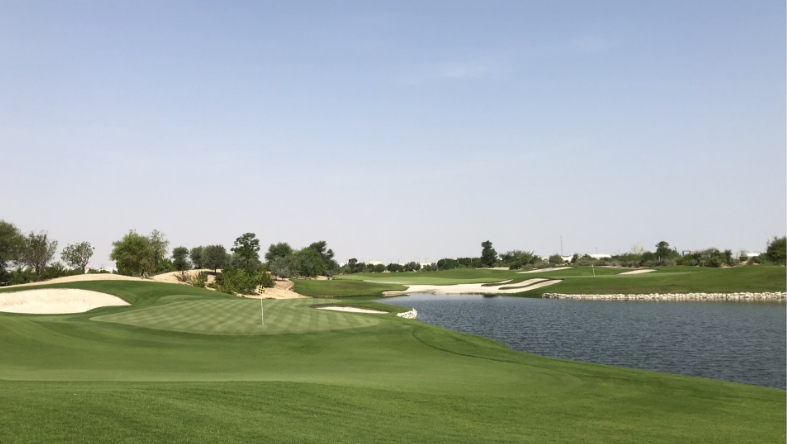1) Improved drainage
In any field, poor drainage potentially induces salinity problems. The improvement consists in the installation of a drainage network, lawn maintenance practices to break impermeable layers, improving aeration and enhancing percolation.
2) Salt wash
Considering that turfgrass absorbs practically pure water, salt levels increase if no periodic leaching irrigation is carried out.
Irrigation water conductivity
Leaching fraction = ––––––––––––––––––––––––––––––––––––––––––––––––––––––––– x 100
5 × Tolerance to soil salinity - Conductivity of irrigation water
to maintain soil salinity.
Soil conductivity should be at most equal to the tolerance of the turfgrass used.
3) Water mixture
Important for achieving acceptable quality.
4) Water more frequently
To offset the increase in salt concentration and lack of water availability for the lawn, we must maintain a higher moisture level in the soil as a short-term solution for periods of stress and waiting for periods in which, due to irrigation or rainfall, leaching may have occurred.
5) Selection of appropriate species depending on the conductivity of soil solution:
varieties and mixtures recommended
Paspalum vaginatum PURE DYNASTY can be irrigated with brackish water and tolerates salinity levels up to 15–20 dS/m. Seawater has an electrical conductivity of around 50 dS/m.
Tall fescue tolerates salinity levels between 3 and 6 dS/m. The best-performing varieties in the Fitó catalog are:
• TALL FESCUE TANK
• TALL FESCUE MERIDA
• TALL FESCUE GENUS
• MIXTURE COSTA (10% Cynodon dactylon)
Perennial ryegrass tolerates salinity levels between 3 and 6 dS/m. The top-performing varieties in the Fitó catalog are:
• PERENNIAL RYEGRASS GREENLAND
• PERENNIAL RYEGRASS RINOV
• MIXTURE CREEPING RYE
• TALL FESCUE MERIDA
• TALL FESCUE GENUS
Bermudagrass tolerates salinity levels between 6 and 10 dS/m. The most effective Fitó varieties are:
• Bermudagrass MED PRO SLT
• Bermudagrass IBIZA




